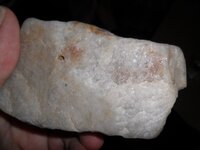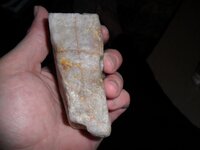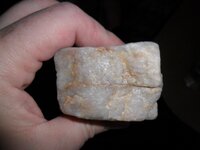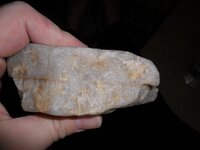JUDDZILLA
Jr. Member
I collect Native American artifacts and crystals/rocks. I found this recently and am puzzled. It appears to have been 2 separate rectangular pieces and attached or someone had started to attempt to split 2 rectangular piece out of it because on all 4 sides is a line you can see directly down the center. It is very heavy and very hard. I took a Dremmel tool to it and it didn't do much but eat up my bit and dull its shine. Very hard to scratch with steel blade. Did shave a bit of dust off and it was greyish white. I've only been collecting about 2 years any help would be appreciated. Thanks.










 By the way .. Welcome to the forum!
By the way .. Welcome to the forum! 



